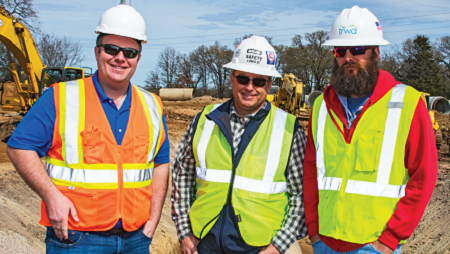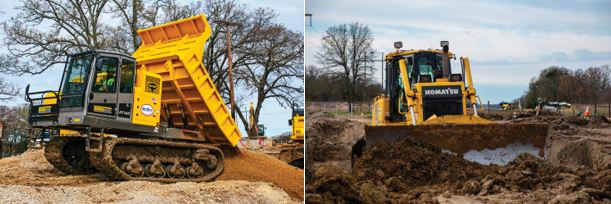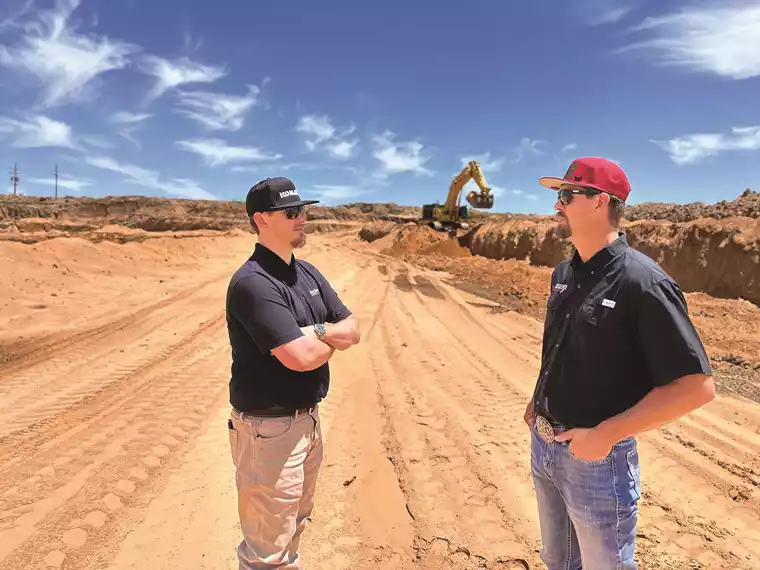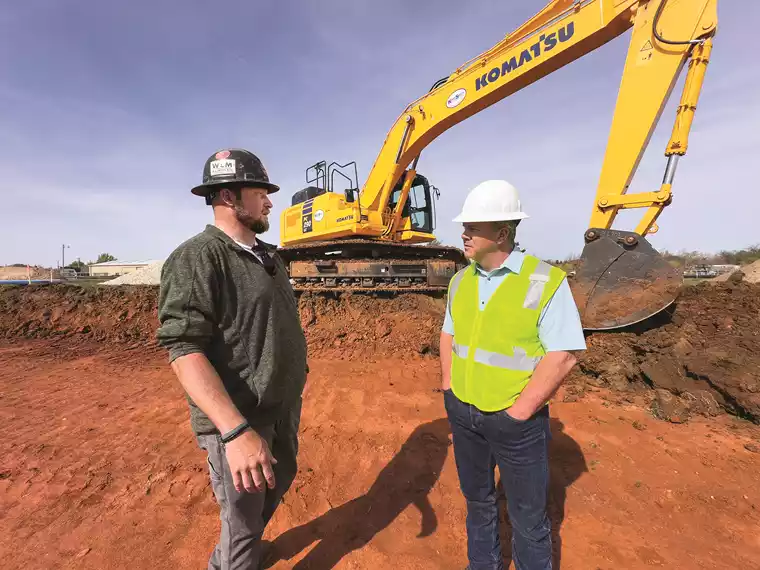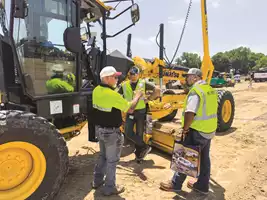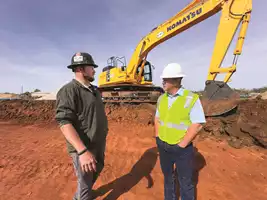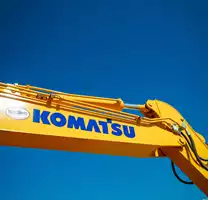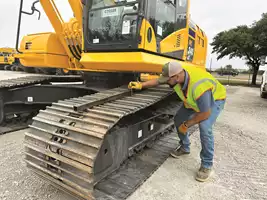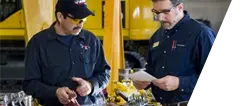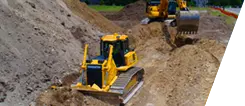TARRANT REGIONAL WATER DISTRICT
Delivering quality water to residents has been the hallmark of this North Texas water supplier for 95 years
North-central Texas is one of the fastest-growing areas in the country. The Dallas-Fort Worth Metroplex alone now boasts a population of nearly 7 million people, and seemingly every suburb and other city within an hour’s drive is expanding as well.
Each day the Tarrant Regional Water District (TRWD) delivers quality water to a large swath of this area. Based in Fort Worth, TRWD serves approximately 2 million residents in 11 counties across 5,800 square miles. Its coverage area stretches southeast from Fort Worth and encompasses Arlington, Mansfield, Corsicana and other cities.
Created in 1924, TRWD immediately began water-supply projects and has continued to seek ways to ensure that its service area has enough capacity to meet current and growing demands. Today, it has seven reservoirs and more than 150 miles of pipeline that run from lakes to water-treatments plants. It monitors the pipeline systems around-the-clock, year-round from a command center, and checks on its reservoirs, construction projects and other sites from the air with its own helicopter. Additionally, TRWD is responsible for watersheds, wetlands and flood protection.
“We move raw water from the source to the taps,” stated Mike Weaver, Pipeline & Right-of-Way Supervisor. “One of the main ways we do that is by installing new and maintaining and replacing pipe as necessary. ”
In the 1990s, the water district began installing prestressed concrete pipe with cathodic protection, and since that time, maintenance has been a major component of the Pipeline Division. Each year, it inspects five to 10 miles of line and replaces a similar amount.
“It’s more cost-effective than abandoning pipe in place and replacing it with new,” Weaver pointed out. “Because we have built enough capacity through the years, we can shut down a line for maintenance and repair it without disruption of service.”
Getting the job done with Terramac crawlers
One recent project took a Pipeline Division crew to Navarro County to replace more than a dozen, 20-foot joints of 90-inch concrete pipe near the Richland Chambers Reservoir. Approximately 40 people worked on the nearly month-long job, which involved removing old sections and installing new segments to correct a thrust and pressure issue.
“With pipe that large, you need a fairly sizeable trench in both depth and width and have the sides sloped back properly to ensure safety,” said Weaver. “That was a challenge because the site was tight. We dug the trench with excavators, placed the dirt to the side and used dozers to push it away and into stockpiles for backfilling later.”
A wet winter with several inches of rain brought soggy conditions. For much of the project, aggregate bedding materials had to be stockpiled anywhere from 75 to 400 yards away from the open trenches. The distance between often had soft and muddy ground conditions.
“Dump trucks of any kind were really not an option,” said Weaver. “They would have gotten stuck, and then we would have had to pull them out. That ties up another piece of equipment, leads to more surface damage to repair and puts us behind. With a hard deadline, we needed a better solution.”
TRWD contacted Kirby-Smith Machinery and worked with Rental Sales Representative Jacky Miller and Governmental Sales Representative James McDonnell to rent two rubber-track Terramac RT14R crawler carriers with 28,000 pounds of carrying capacity and ground pressure of only 8.3 PSI.
“We ran them on some really sloppy, nasty ground, and they floated right over it,” said Weaver. “With the low-ground-pressure rubber tracks, the weight is evenly distributed, so you avoid making ruts and sinking into the soil. That helped us complete the project on time.”
Operator Joe McCune noted that another advantage of the 42,220-pound Terramac crawler carriers is the 360-degree rotating frame.
“Instead of pulling in, turning and backing up to dump with a truck, the Terramacs allow you to pull up, spin the cab and bed and then dump at any angle,” said McCune. “That’s very handy, especially in situations where there isn’t much space to work.”
Jordan Foote, a member of a cathodic protection crew, was impressed as well.
“I have some experience running equipment, so within a few minutes of getting in the cab, I was able to work,” Foote said. “The joystick controls are great. Movement is controlled with the left joystick, while the spin and dump is handled with the right. Everything is laid out well, so even if you have never run a machine before, it would be easy to learn.”
Augmenting Komatsu fleet
TRWD also rented a Komatsu PC290LC-11 excavator and a D65WX-18 dozer from Kirby-Smith Machinery to pair with the PC490LC and a D65PX it owns.
“We have several pieces of Komatsu equipment in our fleet, and they have always been productive,” said Weaver. “The D65WX was a good choice for this project because it has a wider track gauge and lower ground pressure than the other D65 models. The PC290 is a great all-around excavator.”
Weaver noted that TRWD often rents equipment, and, in addition to Komatsu and Terramac, he has called on Miller, McDonnell and Kirby-Smith for Wirtgen Group products such as Hamm sheepsfoot and smooth-drum rollers.
“Kirby-Smith has always accommodated us and delivered equipment in a timely manner,” shared Weaver. “If we have an issue, they respond very quickly. James, Jacky and Kirby-Smith are excellent to work with.”
Looking ahead
Currently, TRWD is teamed up with Dallas Water Utilities on an integrated pipeline project that’s designed to carry 350 million gallons of water per day when complete. Sections are expected to be operational by 2020.
TRWD has always taken a proactive approach to planning for future needs. In the 1990s, it constructed the 1,700-acre George W. Shannon Wetlands Water Reuse Project that is used as a natural treatment for water. It’s also taken on public, conservation-education programs that have led to billions of gallons of savings each year.
Additionally, TRWD has integrated trails and other recreational amenities with the levees it has built as part of its flood-protection efforts.
“We always have multiple things going on,” Weaver noted. “Everything we do is designed for better ways to serve residents as well as conserve water and ensure its delivery with quality and in the most efficient and cost-effective ways possible.”
Learn more about Pipeline here!
See our Terramac line here!

